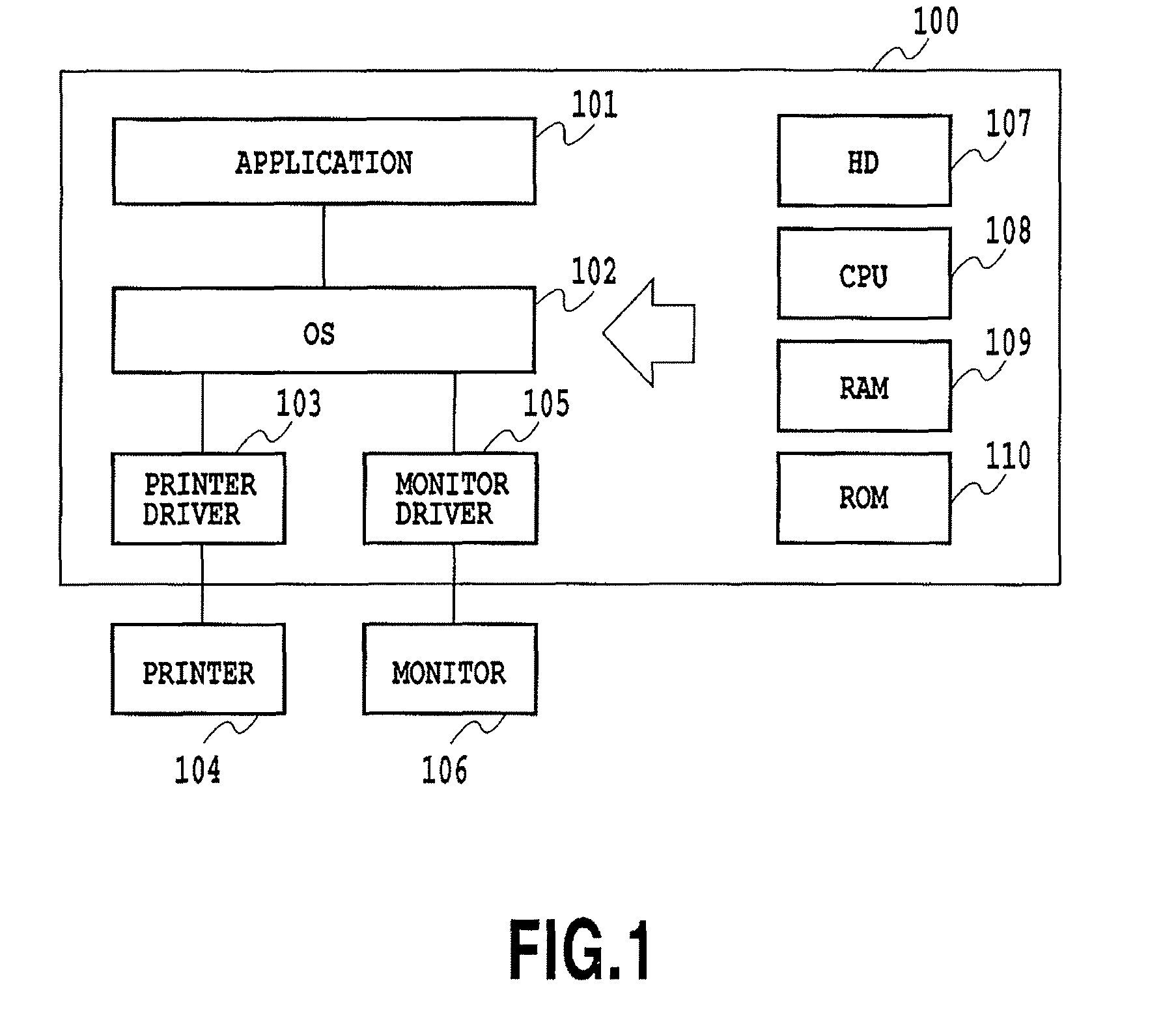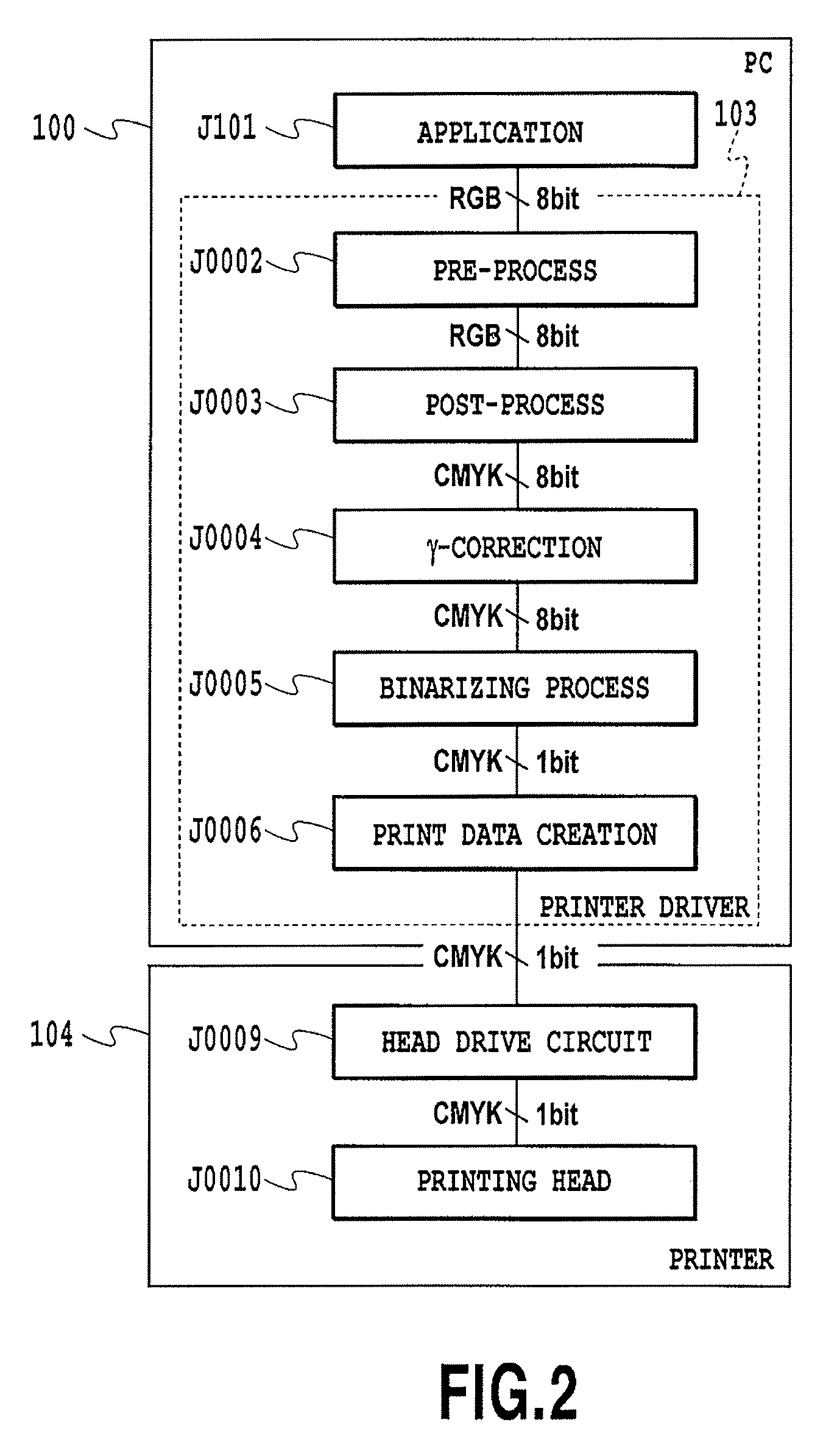Data processing method, data processing apparatus, method for generating dither pattern, and dither pattern
a data processing apparatus and a technology for generating dither patterns, applied in the field of generating dither patterns, can solve the problems of increasing severeness of beading, inability to reduce beading to a satisfactory extent, uneven printing of images, etc., and achieve the effect of reducing the deterioration of image quality caused by beading produced due to grains formed in the middle of printing
- Summary
- Abstract
- Description
- Claims
- Application Information
AI Technical Summary
Benefits of technology
Problems solved by technology
Method used
Image
Examples
embodiment 1
(1) Summary of the Embodiment
[0070]Dots based on data binarized by means of the dither pattern according to the first embodiment of the present invention are appropriately dispersed in which low-frequency components of the dot pattern have less amount, particularly when planes for respective colors are superposed each other. In addition, the example of the above-mentioned embodiment with reference to FIG. 2 relates to a configuration in which the binarization process using dither pattern is executed in the host computer, but a printing apparatus, for example a printer, may execute the binarization depending on a processing load thereon.
[0071]In the binarization process according to this embodiment, the binary data (dots) for four planes corresponding to the colors C, M, Y, and K are generated based on four dither patterns according to this embodiment. For ease of simplification, however, the dither patterns to be described below are used for generating binary data for three planes C...
embodiment 2
[0155]The dither pattern may be changed to another dither pattern depending on the gradation value. More specifically, in the case that the dither patterns are generated as mentioned above in the embodiment, an image in which coverage rates of all of the three planes are 50%, is nice. On the other hand, an image with the coverage rates of three planes 50%, 25%, and 25% may have relatively deteriorated quality. It is because, for example, the dot distribution by the 25% threshold of magenta is generated under the influence of repulsive forces at which dot patterns are generated by using the 25% threshold patterns on other colors.
[0156]To address this problem, the individual dither patterns are generated depending on their duty and are switched for use. Specifically, the dither patterns of the three planes are generated at two stages. First, the dots are divided into quarters assuming 255 levels for one plane. In this case, they are divided into two generating stages 0 to 127 and 128 ...
PUM
 Login to View More
Login to View More Abstract
Description
Claims
Application Information
 Login to View More
Login to View More - R&D
- Intellectual Property
- Life Sciences
- Materials
- Tech Scout
- Unparalleled Data Quality
- Higher Quality Content
- 60% Fewer Hallucinations
Browse by: Latest US Patents, China's latest patents, Technical Efficacy Thesaurus, Application Domain, Technology Topic, Popular Technical Reports.
© 2025 PatSnap. All rights reserved.Legal|Privacy policy|Modern Slavery Act Transparency Statement|Sitemap|About US| Contact US: help@patsnap.com



